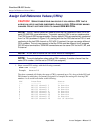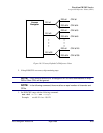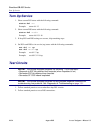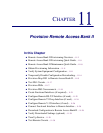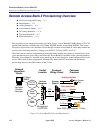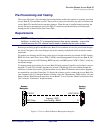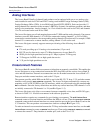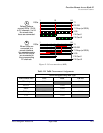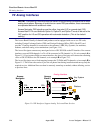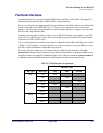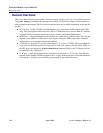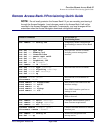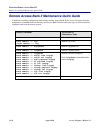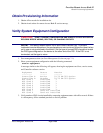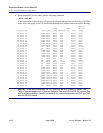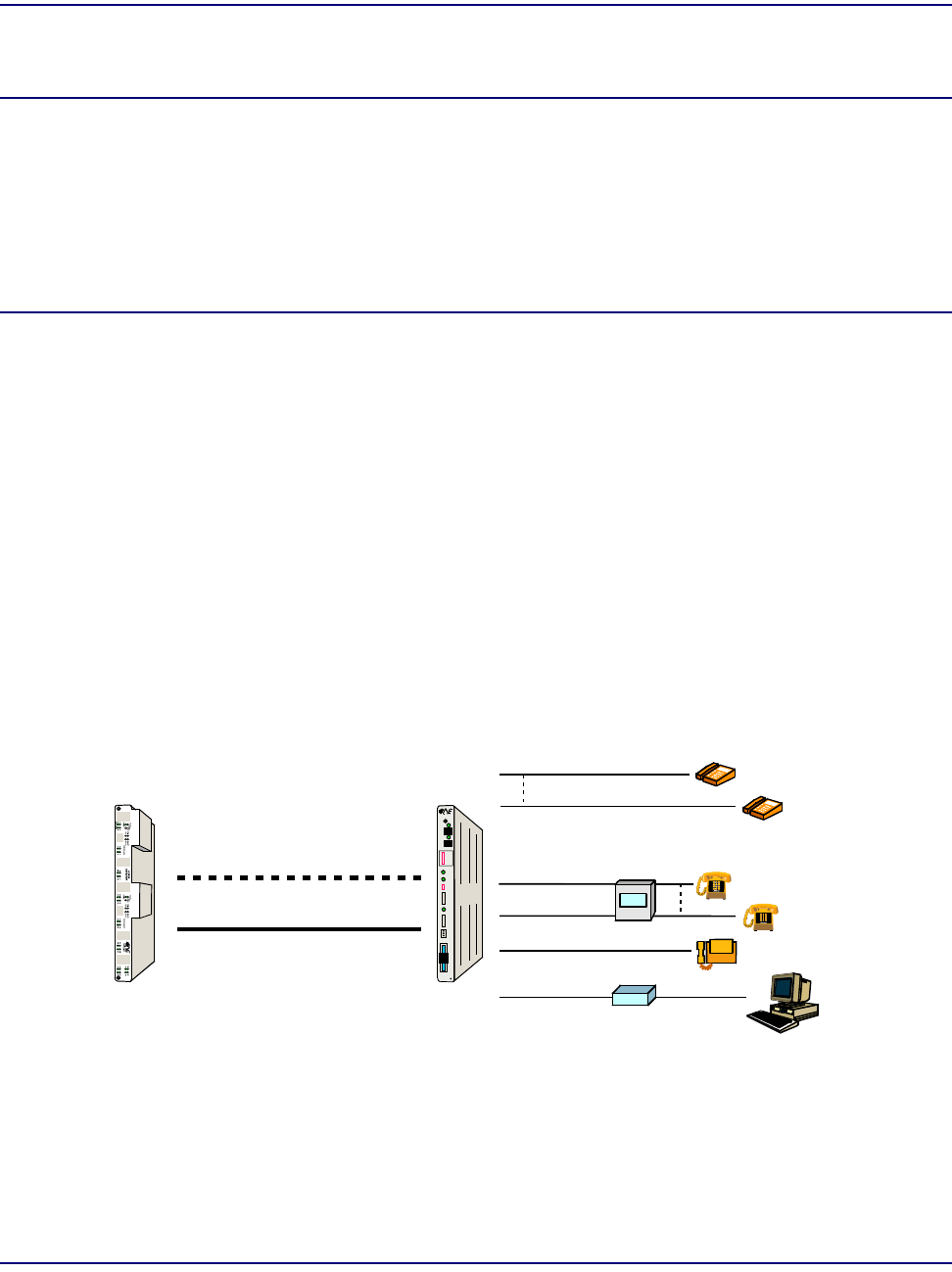
11-6 August 2003 Access Navigator - Release 1.8
Provision Remote Access Bank II
FX Analog Interfaces
FX Analog Interfaces
NOTE: Provisioning FX service uses the same DS0 provisioning commands as for other
analog terminations. Because of restrictions on some DS0 parameters, these commands
are repeated below with additional notes.
Access Navigator DS0 signaling must be either loop start (LS) or ground start (GS).
Access Bank II FX card switches Option A, Option B, and Option C must all be set to the
OFF position for LS and GS operation with automatic detection. (This is the default
setting.)
The Access Bank II family of channel bank products can be equipped with one or two FX cards,
including Foreign Exchange Station (FXS) and Foreign Exchange Office (FXO). Each FX card
provides 12 analog channels for connection to the customer’s PBX, Key Systems, fax machines,
modems, and other analog voice terminations (see Figure 11-4).
The Access Navigator connects any unassigned voice or GR-303 DS0s to the FX interface. If no remote
interfaces are used, DS0 channels 1 to 24 will be connected to FX channels 1 to 24, as in example A in
Figure 11-3. If you connect DS0s to a remote interface, the Access Navigator will connect the remaining
voice or GR-303 DS0s to the FX channels, as in example B in Figure 11-3.
The Access Navigator uses a fixed mapping between the T1 DS0s and FX channels, as in example B in
Figure 11-3. This allows the carrier to pre-wire all phone lines during installation and turn up only the
required service. Additional lines can then be remotely turned up as needed, without affecting service
to previous lines.
Figure 11-4 FX Interfaces Support Analog Voice and Data Services
T1
Access
Bank II
Access
Navigator
FDL
Key System
Fax
Stations
Analog Interface
Modem
DS1 Drop
FDL
PBX
ACCESS B ANK II
Tip & Ring
-48Vdc
Retur n
Ground
T1
Span 1
T1 Test 2
T1 Test 1
T1
Span 2
V.35
DCE
V.35
Status
RS232
Data
Data Interfaces



